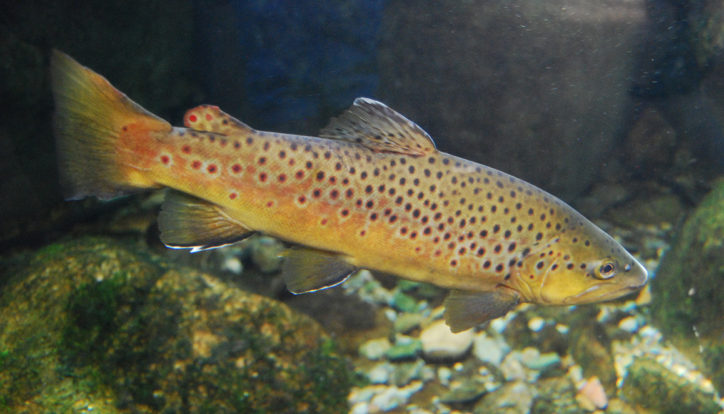Fish of the Salmo genus of the Salmoninae subfamily of the Salmonidae family of the Salmoniformes order of the Protacanthopterygii superorder.

(Brown trout. Photo by © Lubomir Hlasek. hlasek.com)
Brown trout, or sea trout (Salmo trutta) was first described in 1758 by the Swedish scientist Carl Linnaeus (1707 – 1778). Juveniles swim in rivers, large individuals inhabit lakes (“lake trout”) and the coastal part of seas at depths of up to 28 meters, usually up to 1-2 meters, swimming upstream to the river for spawning. The recorded maximum length is 140 cm. Specimens up to 70 cm long are more common. The maximum weight is 50 kilograms. It feeds on insects, mollusks and fishes.

(Brown trout. Photo by © Aaron Gustafson. flickr.com/photos/aarongustafson)
It’s the inhabitant of the rivers and lakes of Albania, Bosnia and Herzegovina, Slovenia, Croatia, Montenegro and Italy. It generates many subspecies and forms.
Names of brown trout (Salmo trutta) in other languages are as follows:
Trofta e murme (Albanian), Пъстърва (Pstrva) (Bulgarian), Sebes pisztráng (Hungarian), Forel (Dutch), Kοινή πέστροφα (Kini pestrofa) (Greek), Trucha marina (Spanish), Trota (Italian), Forelle (German), Pstrąg, Troć (Polish), Truta-comum (Portuguese), Păstrăv (Romanian), Кумжа (Kumzha), Ручьевая форель (Ruchjevaja forelj), Potočna pastrmka, Jezerska pastrmka (Serbian), Potočnapostrv, Jezerska postrv (Slovenian), Potočna pastrva, Jezerska pastrva (Croatian), Truite de mer (French), Pstruh (Czech).